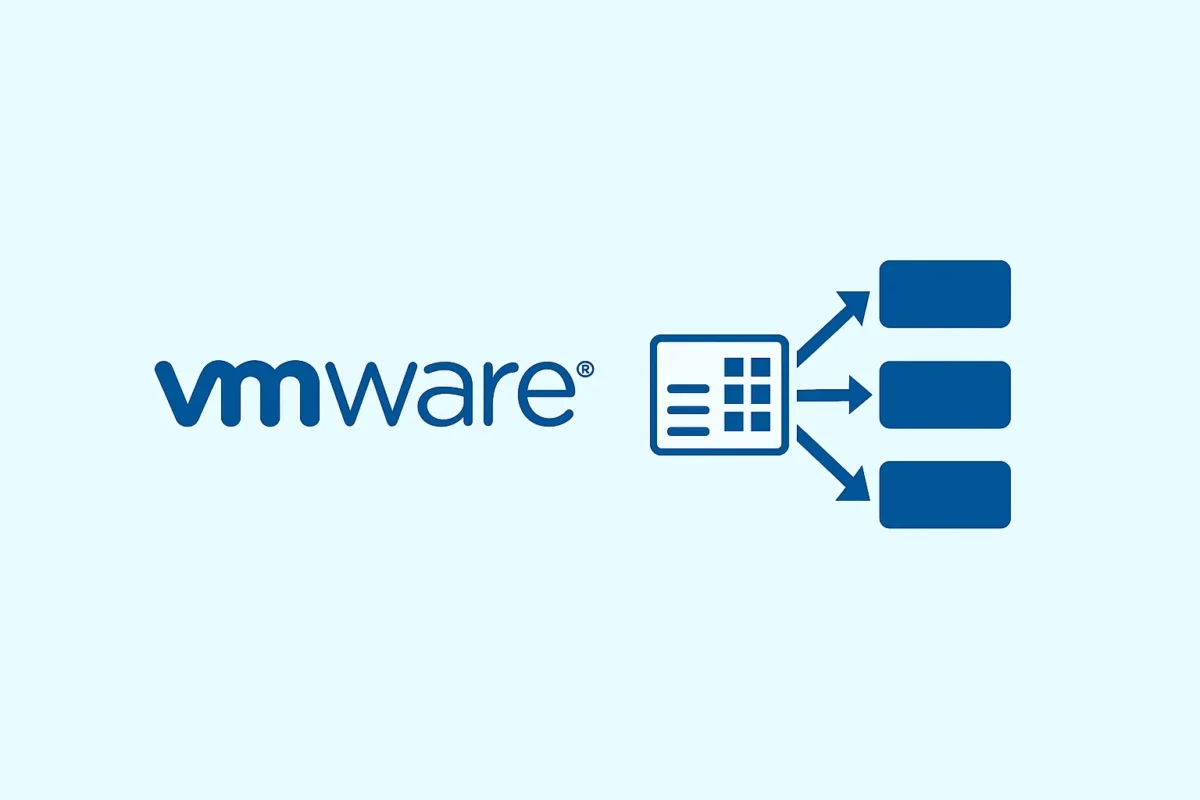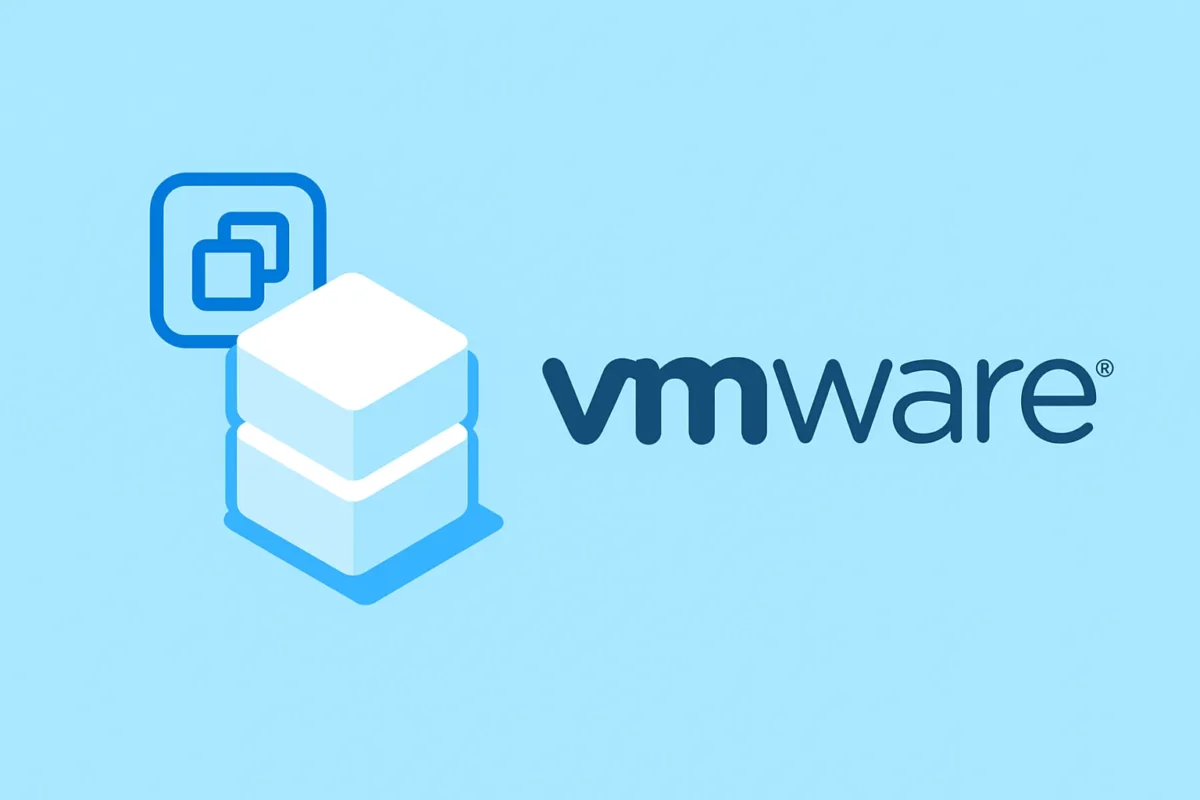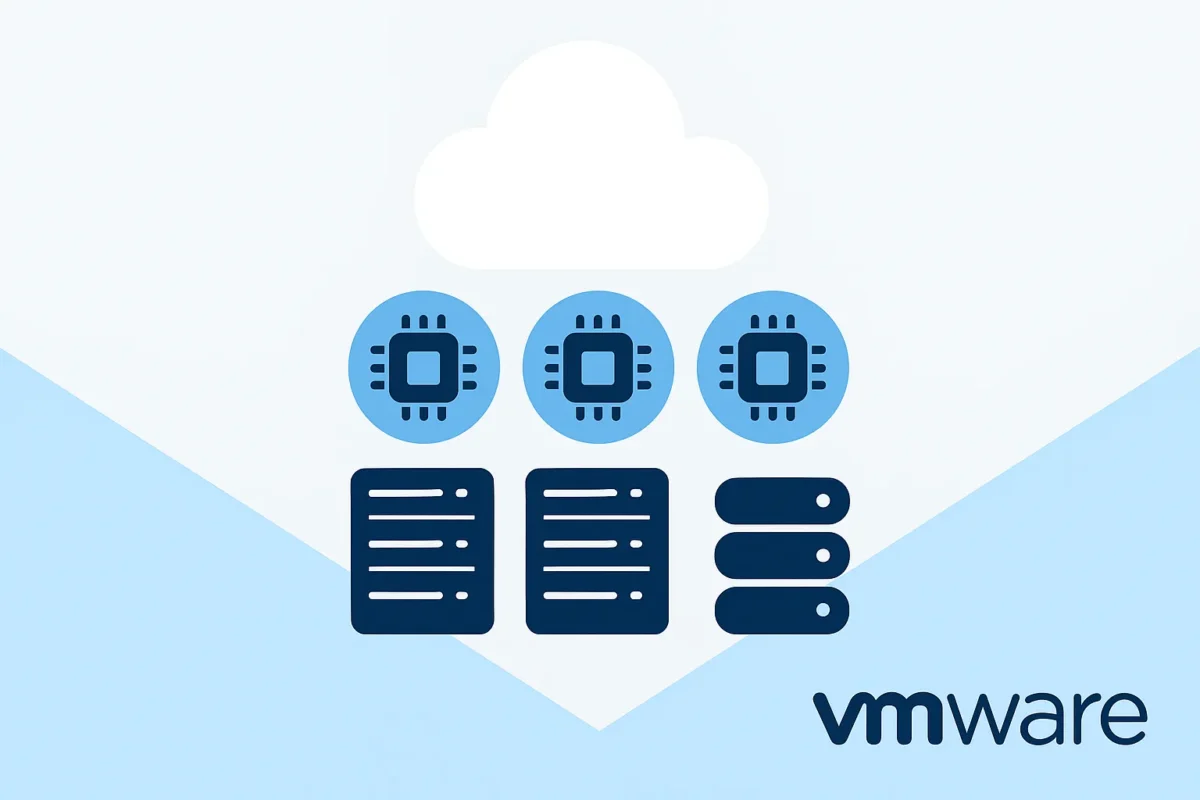Buy a VMware vSAN License in 2025: Complete TiB (ESA/OSA) Guide, Capacity Math, and How to Optimize Cost
A practical, business-oriented guide to buying a vSAN license with the best TCO: the capacity subscription (TiB) model, how it fits with VVF/VCF (vSAN entitlements per core), the ESA vs OSA choice, FTT/RAID and slack reservations, plus vSAN Max, 2-node/ROBO, and common add-ons. Includes sizing formulas, examples, a purchase checklist, FAQ, and common mistakes. MSAdvance can supply and sell official vSAN licenses and assist with sizing and deployment.
Need to buy a vSAN license with guarantees and a fixed price?
MSAdvance sells and supplies VMware vSAN by TiB (subscription). We deliver a capacity calculation for usable vs. licensed, a 1/3/5-year comparison, and a deployment plan (ESA/OSA).
Executive summary — why license vSAN by TiB
- TiB-based subscription: vSAN is licensed by TiB consumed. You pay for what you need and expand easily.
- VVF/VCF already include vSAN per core: VVF provides 0.25 TiB/core and VCF 1 TiB/core. Additional vSAN by TiB licensing is used when your capacity need exceeds those entitlements.
- ESA vs OSA: choosing the right architecture (modern ESA vs. classic OSA) impacts efficiency, performance, and cost per usable TiB.
- Data policies: FTT/RAID (1/5/6) and slack reservation directly affect how many TiB you must license.
- Scalability: from 2-node/ROBO up to vSAN Max (disaggregated storage) for large-capacity scenarios.
How vSAN is licensed: TiB metric and how it relates to VVF/VCF
vSAN (capacity subscription): licensed by TiB consumed. It is independent of host cores and complements the entitlements included with VVF/VCF.
- VVF 9: 0.25 TiB of vSAN per licensed core (aggregatable within VVF). If your design needs more, add vSAN by TiB.
- VCF 9: 1 TiB of vSAN per licensed core (aggregatable within VCF). The vSAN by TiB add-on covers any excess.
- Subscription terms: 1, 3, or 5 years; multi-year typically improves effective cost (TCO).
When to buy vSAN by TiB (on top of VVF/VCF)
- HCI clusters data-dense (VDI, backup repositories, data lakes) where capacity exceeds the included entitlement.
- Environments with more stringent FTT/RAID (e.g., FTT=2 RAID-6) that increase effective capacity consumption.
- vSAN Max and disaggregated storage scenarios with high data growth.
Catalog and options: vSAN, vSAN Max, and included entitlements
| Product | Metric | Typical use | Buying notes |
|---|---|---|---|
| vSAN (Capacity Add-on) | By TiB of capacity | Extend capacity beyond the entitlement included in VVF/VCF or license data-centric vSAN environments | Flexible; ideal for storage-dense HCI or growth without adding cores |
| vSAN Max | By TiB of capacity | Large-scale disaggregated storage, independent from compute | Optimizes cost/GB and consolidates HCI storage |
| VVF 9 (included entitlement) | Per core (min. 16/CPU) | vSphere Enterprise Plus + vCenter + vSAN 0.25 TiB/core | On-prem; the included capacity aggregates across cores licensed with VVF |
| VCF 9 (included entitlement) | Per core (min. 16/CPU) | Full platform with vSAN 1 TiB/core | Includes NSX and SDDC Manager; ideal if you need governance and automation |
MSAdvance supplies all options and proposes the optimal mix for your case (HCI/Max, ESA/OSA, FTT, growth).
Capacity math: usable, policies, and licensed
To license vSAN by TiB accurately, first calculate the usable capacity your workload requires and derive the licensed capacity by applying policies and reserves.
Quick formula
vSAN License (TiB) ≈ (Usable Data + 12–24 months Growth) × Policy Overhead × Slack Reserve
Sizing factors (practical rules)
- FTT/RAID policies:
- FTT=1 RAID-1 → ~2.0×
- FTT=1 RAID-5 (ESA) → ~1.33×
- FTT=2 RAID-6 (ESA) → ~1.5–1.67×
- Slack space reserve: 20–30% for rebalancing, maintenance, and spikes.
- Metadata and efficiency: dedupe/compression (depend on data and ESA/OSA). Consider a conservative improvement of 1.2–1.8× on suitable data.
- ESA vs OSA: ESA delivers better efficiency and performance profiles with modern NVMe/flash.
| Scenario | Usable data | Policy | Slack | Estimated vSAN license | Covered by VVF/VCF? |
|---|---|---|---|---|---|
| Mid-size VDI (ESA) | 40 TiB | FTT=1 RAID-5 (1.33×) | 25% | 40 × 1.33 × 1.25 ≈ 66.5 TiB | If VVF has 144 cores → 36 TiB included, add ~30.5 TiB |
| Critical DB (ESA) | 25 TiB | FTT=2 RAID-6 (1.6×) | 30% | 25 × 1.6 × 1.3 ≈ 52 TiB | With VCF 144 cores → 144 TiB included, covered |
| ROBO 2-node | 6 TiB | FTT=1 RAID-1 (2.0×) | 25% | 6 × 2 × 1.25 = 15 TiB | With VVF 32 cores → 8 TiB included, add ~7 TiB |
| vSAN Max (backup repo) | 200 TiB | FTT=1 RAID-6 (1.5×) | 25% | 200 × 1.5 × 1.25 = 375 TiB | Licensed entirely by TiB (Max) |
Coefficients are indicative. MSAdvance delivers a detailed calculation (policies, ESA/OSA, expected data efficiency, and reserves).
Typical buying scenarios and recommendations
1) SMB with moderate HCI (VVF + vSAN by TiB)
Profile: 3 hosts, mixed workloads, 20% annual growth. Recommendation: use the VVF entitlement (0.25 TiB/core) and add vSAN by TiB only for the excess. Prioritize ESA to gain efficiency with RAID-5/6.
2) Enterprise with high data density
Profile: clusters with 200–500 TiB usable. Recommendation: assess vSAN Max to disaggregate storage and optimize €/TiB; combine with VCF if full governance is required.
3) ROBO/Edge 2-node
Profile: remote offices with 4–20 TiB usable. Recommendation: size with FTT=1 RAID-1 and a generous slack reserve; cover part with VVF and add vSAN by TiB if needed.
4) Repository consolidation (backups/files)
Profile: large volumes of cold data. Recommendation: vSAN Max or ESA clusters with RAID-6, high-density drives, and compression policies.
5) Orchestrated DR
Profile: secondary site with strict RPO/RTO. Recommendation: license vSAN by TiB on the DR site according to retention; add Live Recovery (SRM) for orchestration.
Subscription terms, compliance, and co-termination
- 1/3/5-year subscription: multi-year discounts and the possibility to co-terminate contracts.
- Reporting/consumption: automate periodic usage reporting (recommended) to avoid compliance incidents.
- Lifecycle: validate the HCL, drivers/firmware, and the update plan (ESA is recommended for new deployments).
- Portability: vSAN is primarily on-prem; if you need cloud portability, consider deploying with VCF and associated solutions.
How to purchase with MSAdvance (process and checklist)
- Discovery: data inventory (hot/cold), growth, SLAs, policies (FTT/RAID), ESA/OSA, 2-node/Max.
- Sizing: usable vs. licensed (TiB) calculation, policy impact, and slack reserve; 1/3/5-year scenarios.
- Quote: vSAN by TiB, vSAN Max (if applicable), and the mix with VVF/VCF; add-ons (Live Recovery, Avi), support, and co-termination.
- Supply/Activation: license delivery, registration guide, and best practices (ESA, policies, vSAN health).
- Optional deployment and periodic health checks.
| Area | Item | Status |
|---|---|---|
| Capacity | Usable data + growth (12–24 m) defined | □ |
| Policies | FTT/RAID (ESA/OSA) and slack reserves agreed | □ |
| VVF/VCF | Included entitlements per core accounted for | □ |
| Add-ons | Live Recovery / Avi / vSAN Max evaluated | □ |
| Compatibility | HCL, drivers/firmware, and disk profiles validated | □ |
| Co-termination | Renewal dates aligned | □ |
Common mistakes when licensing vSAN by TiB
- Confusing TB (decimal) with TiB (binary): licensing is in TiB; adjust conversions to avoid under- or over-licensing.
- Forgetting slack space: not reserving 20–30% leads to saturation and costly rebalances.
- Ignoring FTT/RAID impact: moving from RAID-1 to RAID-6 greatly changes licensed capacity.
- Overlooking ESA: sticking with OSA when ESA reduces overhead and improves €/usable TiB.
- Assuming VVF/VCF entitlement covers everything: measure the excess and add vSAN by TiB when needed.
- Misaligned renewals: failing to co-terminate contracts complicates budgeting and management.
Frequently asked questions
How do I know how many TiB of vSAN license I need?
Start from your usable data (including growth), apply your policy’s overhead (FTT/RAID), and add 20–30% slack. The result is your licensed capacity. If you use VVF/VCF, subtract the included entitlement first.
What’s the difference between vSAN and vSAN Max?
vSAN runs in HCI (compute + storage on the same hosts). vSAN Max disaggregates storage for large capacities with better cost/GB.
Can I mix TiB licenses with VVF/VCF entitlements?
Yes. Use the included entitlement (0.25/1 TiB per core under VVF/VCF) and add vSAN by TiB to cover the excess.
Is ESA mandatory?
No, but it is recommended for new designs due to efficiency and performance (especially with RAID-5/6 and NVMe).
Which add-ons are common with vSAN?
VMware Live Recovery (DR/SRM) and VMware Avi Load Balancer for deployments needing continuity and load balancing.
How are compliance and reporting handled?
We automate consumption/licensing and periodic reporting to avoid functional degradations and maintain support eligibility.
Official resources
- vSAN product & documentation — design guides, ESA/OSA sizing, FTT/RAID, dedupe/compression: Product page · Documentation hub
- Product line overview — vSAN entitlements included in VVF/VCF and current editions: VMware vSphere Foundation (VVF) · VMware Cloud Foundation (VCF) · vSAN Max
- VMware Compatibility Guide (HCL) — validate controllers, NICs, NVMe/SSD, and firmware: vSAN HCL
Business-oriented conclusion
vSAN by TiB lets you align cost to data, scale without friction, and optimize €/TiB with ESA and the right policies. Use the included entitlements from VVF/VCF and add only the vSAN license you need. MSAdvance can supply and sell vSAN, calculate your capacity, and deploy it with best practices to maximize performance and availability.
Want a fixed-price proposal to buy vSAN?
We deliver usable/licensed calculations, 1/3/5-year scenarios, and a technical deployment plan (ESA/OSA).










